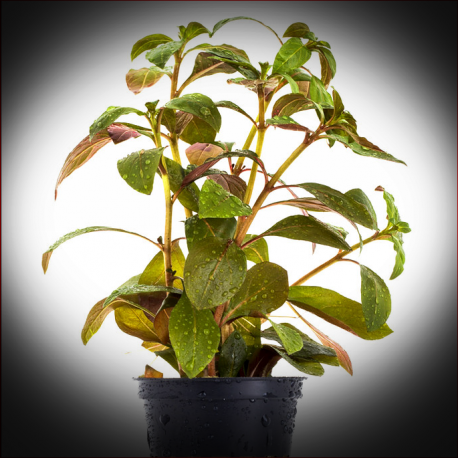More info
Datasheet
| Aquarium Compatible | yes |
| Plant Outdoor | unknown |
| Plant Emersed Growth | yes |
| Plant Growth | medium |
| Temperature Tolerance | 10°C / 50.00°F - 27°C / 80.60°F |
| Temperature | 22°C / 71.60°F - 25°C / 77.00°F |
| Carbonate Hardness | 2-10 kh |
| pH Value | 5-7 ph |
| Light | high |
| Carbon Dioxide (CO2) | 20-40mg/lmg/l |
| Nitrate (NO3-) | 10-50mg/lmg/l |
| Phosphate (PO43-) | 0.1-3mg/lmg/l |
| Potassium (K+) | 5-30mg/lmg/l |
| Iron (Fe) | 0.01-0.5mg/lmg/l |
General Description
Ludwigia glandulosa, commonly known as Cylindricfruit Primrose-Willow, is an aquatic plant with two subspecies found predominantly in the southeastern United States. It is often mistakenly labeled as "Ludwigia perennis" in the trade, which is a different species found in other regions. The plant has lanceolate alternate leaves, and when in bloom during summer, it produces inconspicuous green flowers.
Aquarium Suitability
This plant is suitable for aquariums and is often commercially available. However, it is considered difficult to maintain due to its specific care requirements. It is best suited for tanks with strong lighting, micronutrient-rich water, and sufficient iron levels.
Demands and Hardiness
Ludwigia glandulosa has medium demands in terms of growth and care. It thrives in high light conditions with a recommended carbon dioxide level of 20-40mg/l. It can tolerate a temperature range of 22-25°C and nitrate levels between 10-50mg/l. Proper levels of phosphate and potassium are also essential for its growth.
Aquascaping & Usage
This plant adds vibrant colors to aquariums, making it ideal for accents and background planting. Its reddish-purple leaves stand out, especially when used in Dutch tanks' plant roads. The plant's upright growth and slow pace make it suitable for creating focal points in aquascaping designs.
Propagation
Propagation of Ludwigia glandulosa can be done through seeds or cuttings. By following proper care guidelines and providing the necessary conditions, this plant can be propagated successfully in aquariums.
Habitat and Distribution
In its natural habitat, Ludwigia glandulosa is commonly found in wetlands and wet road ditches across the southeastern states of the USA. While it has a broad distribution, the plant is considered endangered in some regions, such as Indiana and Louisiana, emphasizing the importance of conservation efforts.

